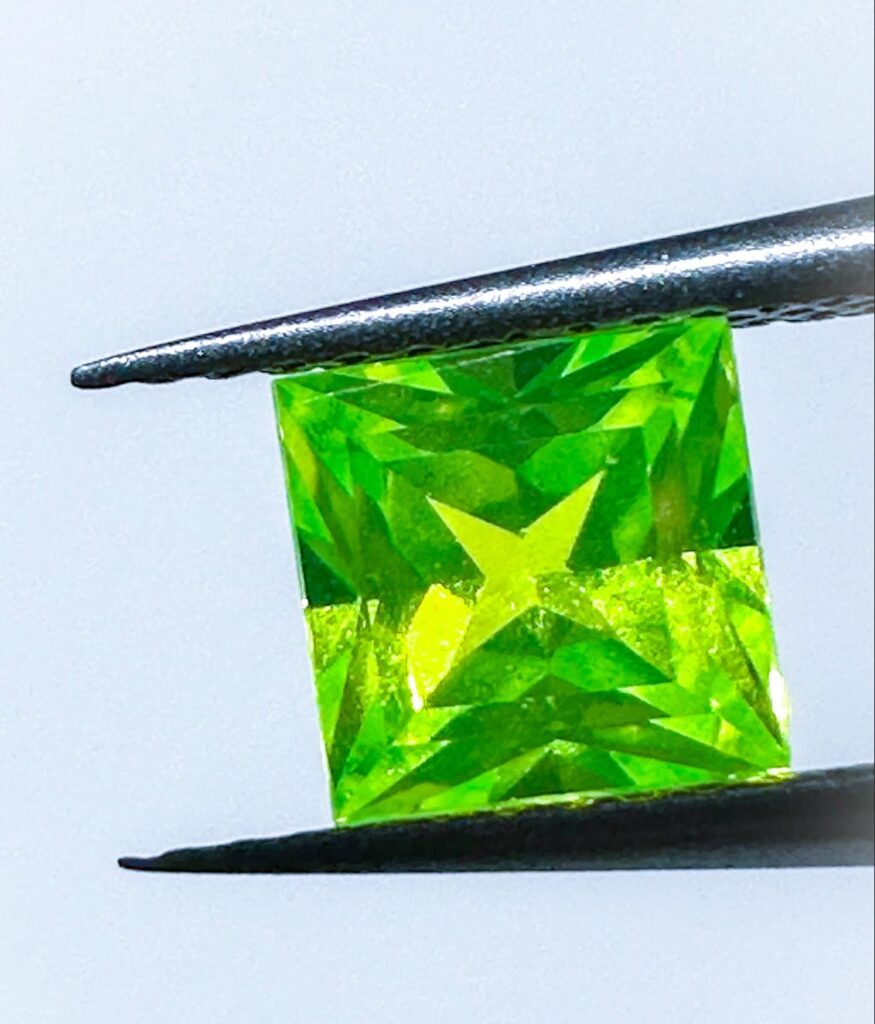


LuAG or Lutetium aluminum garnet
Not all garnets are red or orange. Some are even lab or man made such as this newest one in my personal collection. Lutetium aluminum garnets (LuAGs for short) are solid-state laser crystals, scintillators, and phosphor materials that are harder and denser than YAG (Yttrium aluminum garnets, which I also want). They also have a higher melting point and the added dopan ions enable more stability, according to American Elements.
The Gemological Institute of America has an interesting interview with a seller of LuAGs, TurtlesHoard, which is also the same seller I purchased mine from. He calls them “lumogarnets” and the article noted that these gems are doped with cerium. From the article:
“This material was introduced to the optics industry in the late 1990s and acts as a scintillator, a fluorescent crystal that absorbs high-energy radiation such as X-rays or gamma rays and reemits them as lower-energy visible light that is much easier to detect. LuAG is closely related to YAG electronically and both have the same garnet structure, yielding a gem with similarly excellent optical and gem properties.”
GIA
In the article, Tim Challener, the owner of TurtlesHoard noted that these gems are lab-created and each hav etheir own history behind its use as a gem. He emphasized that our modern lives rely on these materials being grown. “We can’t have cell phone without lithium niobate or modern PET scanners without scintillators.”
PET stands for positron emission tomography test and these tests show the structure of your organs as well as the blood flow to and from your organs.
My LuAG from TurtlesHoard

My LuAG is a calibrated 5 mm square loose stone that is 1.25 carats in weight. Although I took photos of the stone under a long wave UV light, the photos do not do this gemstone justice. It’s just dazzling with and without the UV.
Uses for LuAG
The primary uses for LuAG (besides sitting on my shelf for me to stare at it) are primarily high-efficiency laser devices.Wikipedia notes that LuAG is favored due to its high density and thermal conductivity. The gemstone has a small lattice constant compared with other rare-earth garnets that results in a higher density that produces a crystal field with narrower line-widths and greater energy level splitting in absorption and emission. This greater density also enables the crystal properties to keep from changing when dopant ions are added which makes it great for high energy particle detection. You can read the full Wikipedia article here.
